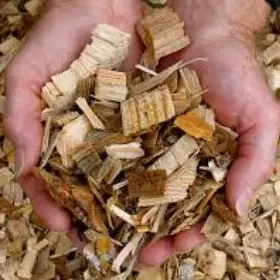Our Offerings
LPG & BIOFUEL SUPPLY
Trusted and Reliable at Best Rates.
SUPPLY
We supply these fuels to your doorstep as one of the largest distributors/ manufacturers of these fuels in North India
ANNUAL MAINTENANCE
We also provide annual maintenance services of your energy set-up and provide breakdown management services etc round the year.
About Bio Fuel
India has a significant amount of agriculture residue
biomass fuels, including:
The availability and use of these biomass fuels can vary regionally
depending on agricultural practices and local resources.






Crop Residues
Mustard straw, Rice Straw, Wheat Straw, Sugarcane Bagasse, Cotton Stalk, Maize Stalk.
Wood Waste
Sawdust, Wood Chips, Wood Shavings.
Others
About Bio Fuel
Comparison of various agriculture-based biomass fuels in India:
| Fuel Types & Properties | Rice Straw | Wheat Straw | Sugarcane Bagasse | Groundnut Shells | Mustard Straw | Cashew Shells |
|---|---|---|---|---|---|---|
| Availability | High | High | Moderate | Low | Moderate | Low |
| Moisture Content | 15-20% | 10-15% | 40-50% | 10-15% | 10-15% | 10-15% |
| Calorific Value (Kcal./KG) | 3200-2500 | 3500-3800 | 2000-2500 | 3500-4000 | 3000-3500 | 5500-6000 |
| Emissions | Low | Low | Low | Low | Low | Low |
| Cost Efficiency | Good | Moderate | Low | Moderate | Good | Good |
| Usage | Brick Kilns, Foundries, Metalworking Units, Ceramic and Glass Manufacturing, Food Processing, Paper and Pulp, Power Generation | |||||
State of the art Bio pellet production facilities
Raw Material Collection and Storage
Gather biomass feedstock (e.g., agricultural residues, wood waste). Store the material in a dry, well-ventilated area to prevent spoilage.
Size Reduction
If the material is large a crusher is used to reduce it to smaller pieces. This improves efficienc subsequent steps.
Drying & Mixing
Reduce the moisture content to 8-12%. This can be done using Natural drying or Mechanical drying. If using multiple biomass types or adding binders, mix the materials thoroughly to ensure uniformity.
Briquetting
Compact the dried biomass into dense briquettes using high pressure. This is done using Hydraulic briquetting machines
Cooling
Allow the hot briquettes to cool down to room temperature. This prevents cracking and improves handling.
Packaging & Quality Control
Package the briquettes in bags or other containers for storage and transportation. Check the briquettes for density, moisture content, and other quality parameters.
OUR DESCRIPTION
Advantages of Bio Briquettes for Industries
- Cost-Effectiveness 40%
- Environmental Benefits 70%
- Operational Benefits 100%
Industrial Applications of Biomass Briquettes
Brick Kilns
Industries
- Foundries and metalworking units.
- Ceramic and glass manufacturing.
- Food processing industries.
- Paper and pulp industries.

